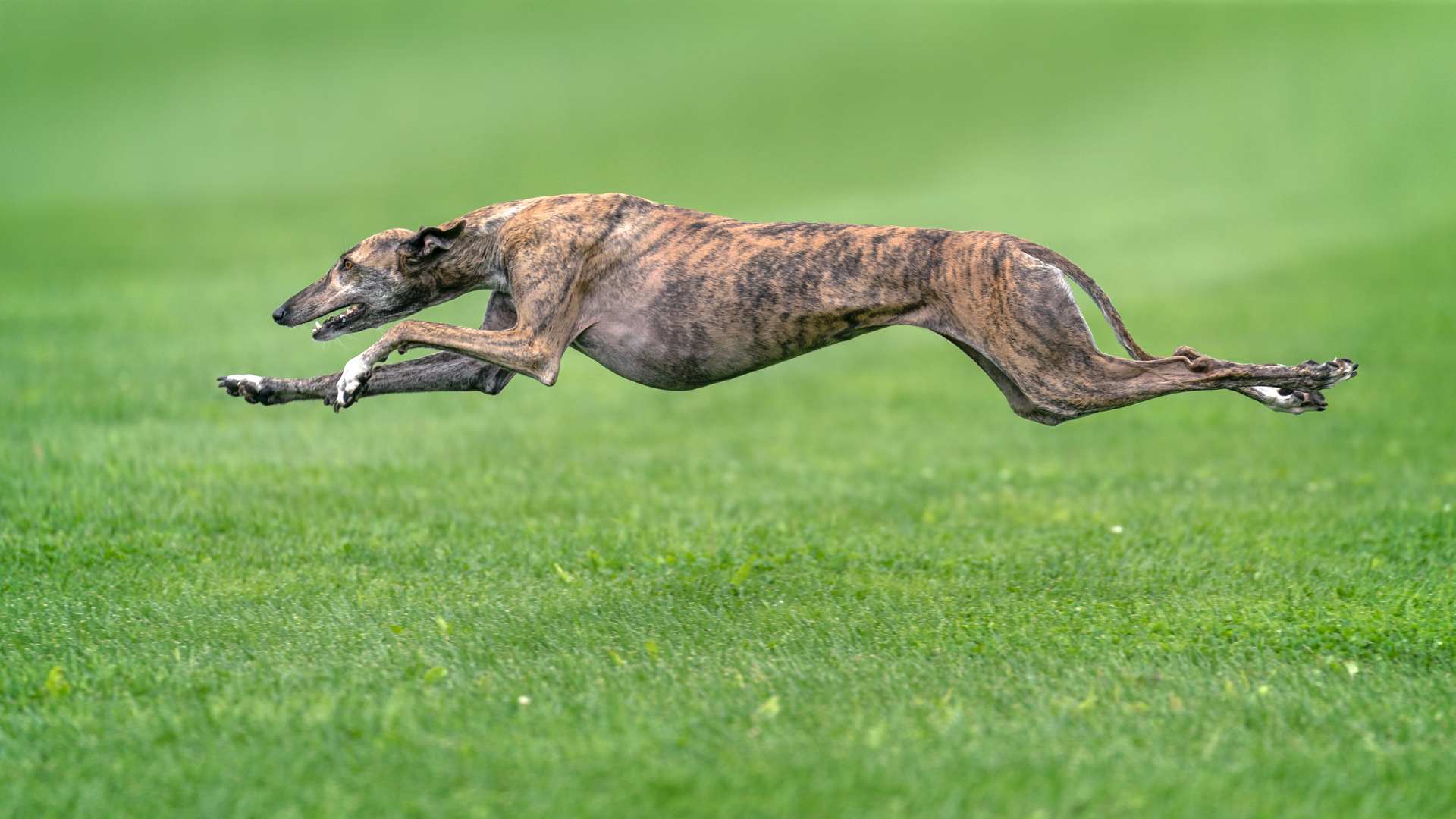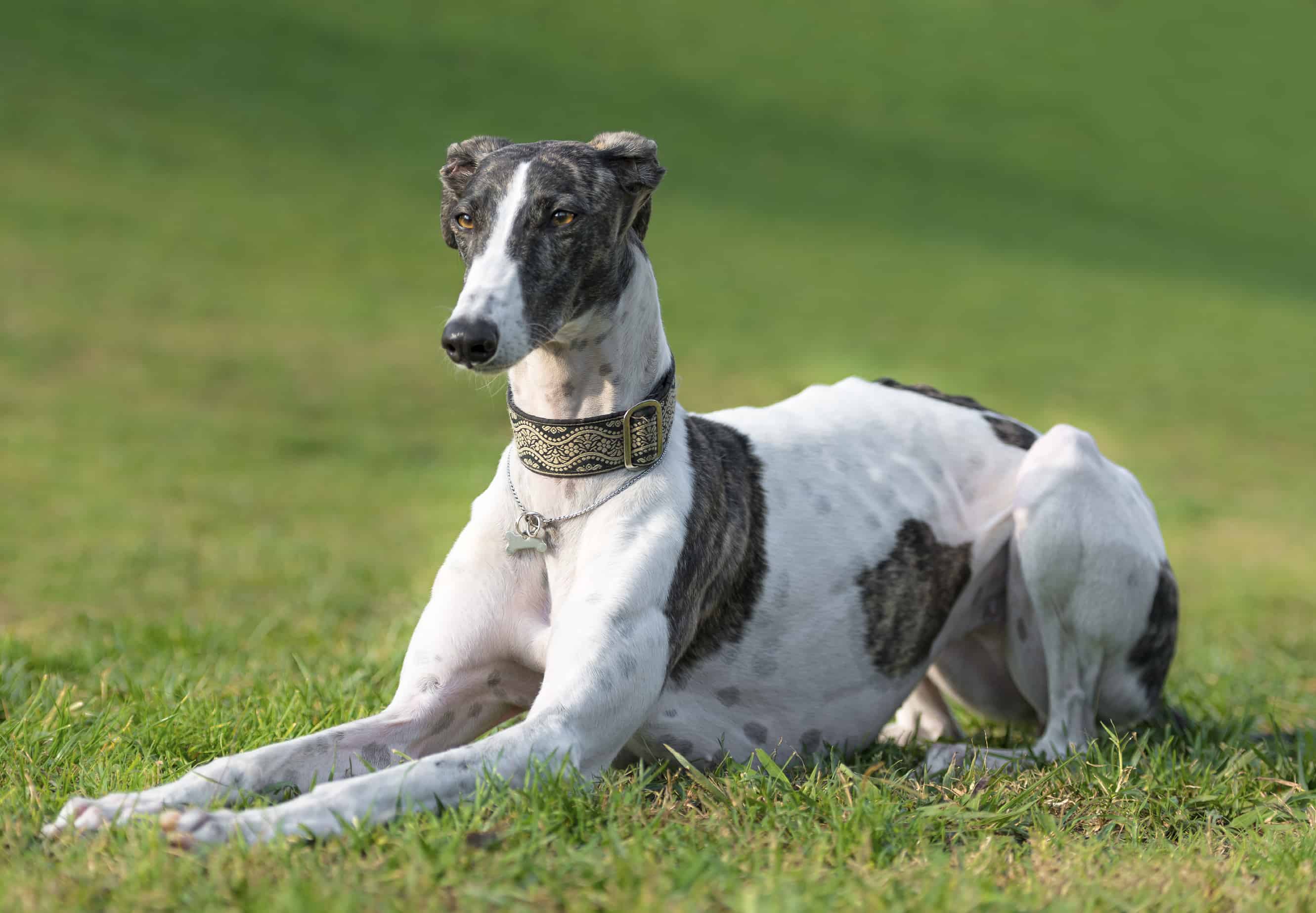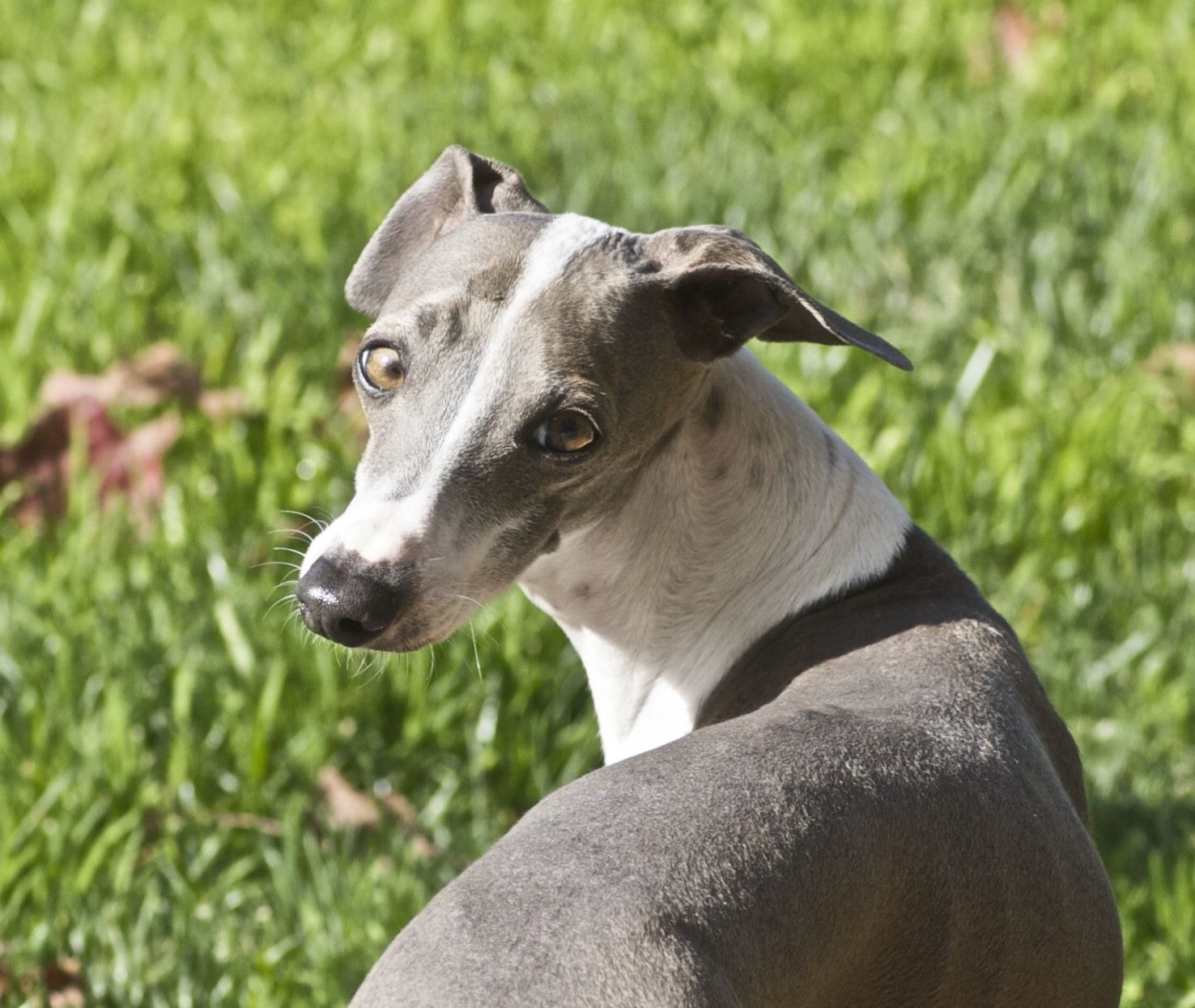
The Greyhound is one of the oldest dog breeds, with ancestry dating back over 4,000 years to ancient Egypt, Mesopotamia, and Greece. Revered for its speed, elegance, and hunting skills, the breed was traditionally used to hunt game such as deer and hares by sight rather than scent, making it a sighthound.
In medieval Europe, Greyhounds became symbols of nobility and were featured in art and literature. Later, they became central to the sport of coursing, and eventually, greyhound racing, which made the breed popular across many countries. As racing has declined, thousands of retired racers have found loving homes as pets, thanks to organized adoption programs.
The American Kennel Club (AKC) recognized the breed in 1885, and it remains one of the most iconic and elegant dog breeds today.
Greyhounds are beloved for their unique blend of athleticism and calm companionship. Often described as “45-mph couch potatoes,” they are highly sought after by individuals and families looking for a gentle, low-maintenance companion. Many are adopted as retired racers, making the breed especially visible in adoption communities.
Greyhounds have an unmistakable silhouette—long, lean, and built for speed. Their body structure is designed for powerful sprinting.
• Coat: Short, smooth, and fine—easy to maintain.
• Color: Comes in a wide variety—black, white, brindle, fawn, red, blue, and combinations.
• Size:
o Height: 25–30 inches (63–76 cm)
o Weight: 60–70 lbs (27–32 kg)
• Head & Expression: Long, narrow head with a slight stop and gentle, soulful eyes.
• Ears: Small, rose-shaped, folded back, perk up when alert.
• Tail: Long and tapering, carried low with a natural curve.
• Body: Deep chest, arched loin, and strong legs—designed for explosive bursts of speed.
Despite their racing background, Greyhounds are known for their calm and affectionate nature.
• Gentle and Affectionate: They bond closely with their humans and enjoy relaxing at home.
• Low Energy Indoors: Surprisingly lazy inside—happy with lounging most of the day.
• Intelligent and Curious: Learn routines quickly and are typically easy to housetrain.
• Sensitive: They respond best to gentle, positive reinforcement training.
• May Have Prey Drive: Many retired racers have strong instincts toward small animals—introductions should be done carefully.

Greyhounds are ideal for individuals or families who want a low-maintenance, affectionate, and elegant pet.
• Apartment-Friendly: Despite their size, they are quiet, clean, and don’t need much indoor space.
• Low Grooming Needs: Their short coat requires minimal maintenance.
• Rarely Bark: Generally quiet dogs, perfect for calm households.
• Retired Racers Available: Many are looking for homes, already crate-trained and socialized.
• Elegant Yet Approachable: A breed that draws attention but is gentle and unassuming.
While low-maintenance, Greyhounds still have specific needs due to their unique body type and sensitivity.
• Training:
o Use gentle, reward-based methods.
o Focus on building trust, especially with rescue or ex-racing Greyhounds.
• Exercise:
o Needs daily walks and occasional sprints in safe, enclosed areas.
o Not a high-endurance breed—short bursts of activity are ideal.
• Grooming:
o Brush weekly to remove loose hair.
o Monitor skin for scrapes—they have very thin skin.
• Nutrition:
o Lean build—avoid high-fat foods and watch for digestive issues.
o Elevated food bowls may help with digestion.
• Companionship:
o Thrive when part of the family. Not suited for long periods alone.

Greyhounds typically live 10–14 years and are generally healthy, but they do have unique sensitivities:
• Bloat (gastric torsion)
• Bone injuries due to thin skin and low fat
• Anesthesia sensitivity (require special care during medical procedures)
• Dental disease
• Osteosarcoma (bone cancer) in some lines
Regular vet visits and thoughtful care help ensure a long, healthy life.
Compared to Whippets, Greyhounds are larger and slightly more reserved. They are quieter and more relaxed than most working or sporting breeds. Unlike high-energy herding breeds like the Border Collie, Greyhounds are content with brief exercise and long naps.
If you're looking for a loving, calm, and low-maintenance companion, the Greyhound is a top contender. Suitable for urban living, seniors, and first-time dog owners, they adapt well to many lifestyles when their modest exercise and companionship needs are met.
Not ideal for homes with small pets unless carefully introduced.
United Pet Club supports adopters and dog lovers through every step—from retired racer adoption to training and healthcare guidance. If you're ready to embrace a dog with grace, heart, and quiet charm, the Greyhound may be your perfect match.